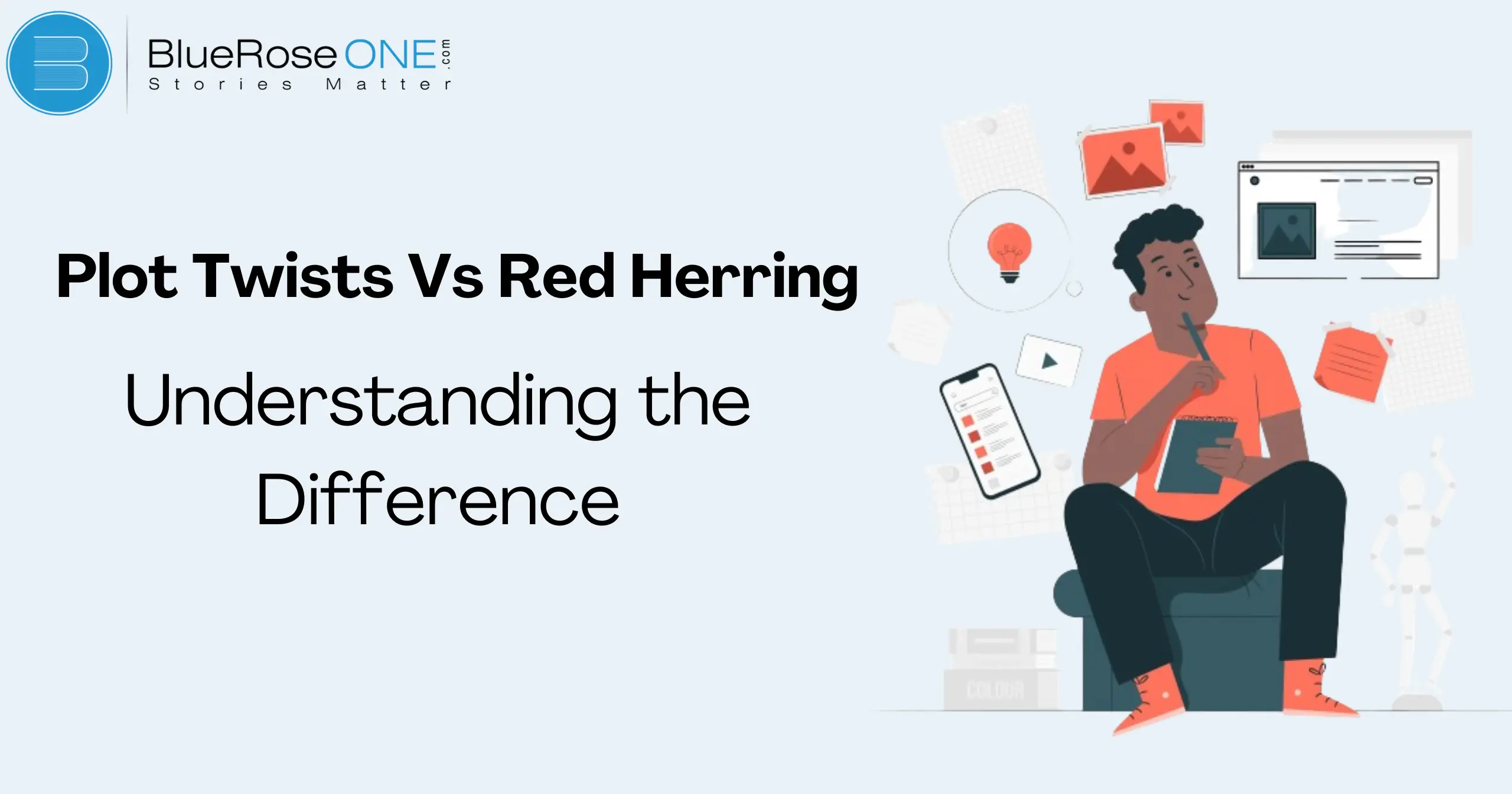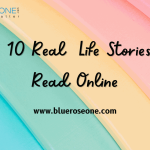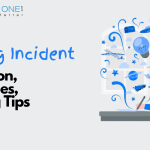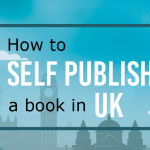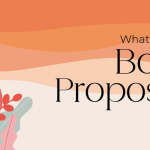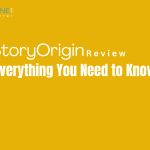Plot twist and red herrings are two of the most captivating and surprising elements in narrative. These narrative strategies keep viewers or readers on the edge of their seats and add layers of mystery.
However, what are red herrings and narrative twists specifically, and how are they different? Any writer who wants to create intriguing and unexpected stories must comprehend these ideas.
What is a Plot Twist?
A plot twist is an unexpected turn of events that unexpectedly alters the course or conclusion of a story. Plot twists, which frequently happen at pivotal moments, keep readers interested by raising questions and building tension.
This literary method may include character discoveries, unanticipated happenings, or unintended outcomes. The secret to a good plot twist is to surprise the audience while maintaining credibility with the overall setting of the story.
You may also read: Print on Demand vs Traditional Publishing: Which is Right for you?
Characteristics of a Good Plot Twist
Unpredictability
A good plot twist keeps readers on their toes by being completely unexpected. It introduces a surprising turn of events that no one saw coming, making the story more engaging and exciting.
This unpredictability is key in creating a memorable plot twist, as it adds an element of shock and surprise, which can make the story more compelling and enjoyable. By carefully planting subtle hints, writers can craft twists that feel both surprising and satisfying.
Foreshadowing
A strong narrative twist requires a lot of foreshadowing. It entails subtly revealing the twist early on in the narrative through hints or indications.
This method gives the twist a sense of surprise but also rationality when it occurs. Good foreshadowing ensures that the plot twist improves the story rather than feeling out of place by keeping readers interested and giving the narrative depth.
Impact
An effective plot twist should force the reader to reconsider what they previously believed to be true about the narrative. This abrupt shift in course should seem both unexpected and inevitable, making for an unforgettable moment that holds readers’ attention.
A cleverly done plot twist gives the story more depth and makes a lasting impact; it frequently ends up being a major talking point for readers long after they’ve finished the book.
You may also read: Narrative Structure: Definition, Examples, and Writing Tips
Famous Examples in Literature and Film
“The Sixth Sense” – The revelation about Dr. Malcolm Crowe.
“Fight Club” – The true identity of Tyler Durden.“Gone Girl” – Amy’s elaborate scheme.
Types of Plot Twists
The Unexpected Reveal: An unexpected reveal is a classic type of plot twist where hidden information dramatically changes the story’s direction. This twist often involves a character’s true identity or a surprising connection between events.
For example, in mystery novels, the unexpected reveal might uncover the real culprit. This type of plot twist keeps readers engaged and adds depth to the narrative, making the story more exciting and memorable.
The Betrayal: When a dependable character betrays their allegiance, startling the other characters and the audience, this creates a betrayal plot twist. With added tension and emotional effect, this revelation has the power to drastically alter the course of the narrative.
It frequently discloses secrets or hidden intentions, which heightens the intrigue of the story. For instance, a close comrade may covertly work for the enemy in many espionage thrillers, which can result in a powerful and unforgettable story twist.
The Unseen Consequence: A “unseen consequence” plot twist drastically changes the course of the narrative by exposing unexpected repercussions of a character’s actions.
These plot twists take readers by surprise by demonstrating how seemingly insignificant incidents may have far-reaching effects.
For instance, a hero may save a life only to learn afterwards that the rescue had an unintentional negative impact on the situation. Plot twists of this kind highlight how unpredictable events may be, which keeps readers interested and on edge.
The False Protagonist: When a character is initially presented as the main hero or heroine in a novel, a “False Protagonist” plot twist deceives readers by revealing later on that they are not essential to the story’s conclusion.
This plot twist defies predictions and has the power to drastically change the narrative’s focus, frequently surprising and enthralling viewers.
False Protagonist twists offer depth and tension by defying our preconceived notions about who drives the tale and forcing us to reevaluate our assumptions.
You may also like: How to Publish a Book? | Publish Your Book | BlueRoseOne
What is a Red Herring?
A red herring is a narrative device used to mislead or distract the audience from the true direction of a story. It’s like a false clue that seems important but ultimately doesn’t lead to the main plot development.
Unlike a plot twist, which surprises by altering the story’s direction in a significant way, a red herring is meant to throw off expectations temporarily.
For example, in mystery novels, a character might appear suspicious to divert attention from the actual culprit, creating suspense and surprise when the truth is revealed.
You may also like: 10 Essential Tips for Improving Your Creative Writing Skills
Characteristics of a Good Red Herring
Subtlety
Subtlety is one of the most important qualities of an effective red herring in narrative. A red herring is a literary trick that deceives readers or viewers by drawing their focus away from the plot’s actual path.
It functions best when it is carefully incorporated into the plot, looking credible enough to be convincing but eventually leading to a fallacious conclusion.
Good red herrings stay just outside the lines of forced or overt, preserving the tension and surprise that make for an interesting narrative.
Plausibility
A good red herring in narrative must have plausibility, especially to set it apart from a plot twist. A red herring ought to make sense in the story’s overall framework and be able to genuinely raise doubt or cause confusion without coming across as fabricated or forced.
This guarantees that the audience will experience the impact of deception in a way that amplifies the suspense and surprise of the story when the real twist is revealed.
In order to keep the reader or viewer interested and coherent, characters’ motivations and actions must be carefully integrated into the story to preserve credibility.
Distractive
Being distracting is a crucial quality of a good red herring. Similar to a literary decoy, a red herring in narrative expertly draws the reader’s focus away from the actual plot developments or the genuine culprit.
It is intended to deceive without being overt, keeping readers on the edge of their seats. A red herring adds intricacy to the story, builds suspense, and enhances the surprise and satisfaction of the final plot twist by presenting false clues or deceptive events. Writing gripping mysteries and thrillers requires writers to become experts at creating distractions.
You may also like: What is Line Editing and How Can It Help in Your Writing?
Famous Examples in Literature and Film
- “The Da Vinci Code” – Various misdirections throughout the investigation.
- “Sherlock Holmes“ – Numerous false leads in solving cases.
- “Scream” – Suspects that turn out to be innocent.
You may also read: A Complete List of Anuja Chuahan Books
Types of Red Herrings
The Misleading Clue
In storytelling, a “misleading clue” or red herring is a narrative device used to divert the audience’s attention from the real direction of the plot. It’s like a false lead intentionally placed to create suspense or confusion.
Authors strategically insert misleading clues to keep readers guessing and to enhance the surprise when the true resolution is revealed.
These red herrings add depth to the story by challenging readers to discern between what’s significant and what’s misleading, ultimately enriching the overall narrative experience.
The Decoy Character
A decoy character is a plot device used to strategically divert attention from the real adversary or the actual sequence of events. This kind of red herring is meant to trick viewers or readers by seeming important at first but eventually leading nowhere.
Decoy characters are used by authors to build tension and keep readers wondering where the plot will really go. These characters can enhance the overall storytelling experience by adding complexity and surprise when they are deftly woven into the story.
The False Lead
A “False Lead” is a traditional red herring in storytelling that deceives characters or listeners about the real course of the narrative.
It serves as a kind of shiny item diversion from the true path. False leads are used by authors to build tension and leave readers wondering.
For instance, a suspicious character may be presented early in a mystery book, leading readers to fear they are the culprit—only to have their innocence revealed later. This method gives the story greater depth and increases the surprise and satisfaction of the final plot twists.
You may also like: What is Denouement in literature? Definition and Importance
Plot Twist vs. Red Herring: Key Differences
Purpose in the Story
- Plot Twist: To shock and shift the narrative.
- Red Herring: To mislead and maintain suspense.
Timing and Placement
- Plot Twist: Usually occurs at pivotal moments.
- Red Herring: Scattered throughout to sustain mystery.
Impact on the Audience
- Plot Twist: Provides a dramatic shift and emotional impact.
- Red Herring: Keeps the audience engaged and guessing.
You may also like: How to Outline a Memoir in 6 Steps
How to Effectively Use Plot Twists
Planning and Foreshadowing
Plot twists work best when they are well-planned and subtly hinted at throughout the story. Planning is ensuring that unexpected events feel both natural and shocking when they are revealed by establishing the basis for them early on.
By obliquely hinting at future happenings, foreshadowing increases believability and suspense for the twist. You can increase the impact of your story by leading readers towards a rewarding and unexpected twist through the careful placement of clues and hints.
Maintaining Logical Consistency
Plot twists can draw readers into your novel, but it’s important to keep everything logically consistent. A well-written plot twist should be unexpected without coming across as fabricated or unrealistic.
Make sure the twist fits in with the world-established rules of your novel and the motivations of the characters. This constant avoids misunderstandings or skepticism and keeps readers interested.
You can increase the impact and authenticity of your narrative and create a fulfilling and surprising story by carefully crafting twists that logically follow from previous events or character attributes.
Building Suspense
Creating tension is essential to using plot twists in your novel effectively. Because it builds expectation and curiosity about what might happen next, suspense keeps readers interested.
Suspense can be effectively created by using deliberate pacing and foreshadowing. Throughout your story, include subliminal cues or indications that allude to impending disclosures.
This keeps readers wondering and enhances the impact and satisfaction of the final plot revelation. It is possible to skillfully guide your audience towards the surprising turn of events in your story by progressively building suspense and maintaining uncertainty about the result.
You may also read: How to Start a Novel: A Step By Step Guide
How to Effectively Use Red Herrings
Subtlety and Plausibility
When using red herrings in a story to heighten the impact of a plot twist, subtlety and plausibility are essential. A masterful red herring deceives viewers or readers in a subtle way, leading them to believe in a false lead that makes sense in the context of the story.
The deception ought to be convincing enough to keep people interested without being overtly apparent. In order to create a captivating and fulfilling narrative experience, designers can effectively heighten suspense and surprise when the genuine plot twist is revealed by carefully weaving in hints that support the false narrative.
Distracting the Audience
Red herrings are a storytelling device that, when used skillfully, can draw readers in and take them down unexpected paths. These diversions may increase tension and build expectation for a significant turn in the story.
Writers can surprise readers with plot twists that redefine the story and make it more memorable by deftly putting red herrings.
Enhancing the Mystery
Place red herrings strategically to lead readers to incorrect conclusions and heighten the sense of mystery in your work. These misleading hints have the power to build tension and keep viewers wondering about the real course of the story.
You can increase the effect of your eventual plot twist and give your viewers a more pleasant and shocking ending by skillfully including red herrings.
You may also like: What is Upfront Fiction? Definition, Traits and Examples
Impact on the Reader and Viewer Experience
Emotional Reactions
In order to improve the reader and viewer experience, emotional responses are essential, particularly when a plot twist occurs. A cleverly done twist has the power to arouse astonishment, dismay, or even empathy, depending on how the viewer responds to it.
It may increase their level of involvement with the narrative, causing readers to reevaluate prior conclusions and adopt fresh perspectives on the characters or events.
In addition to captivating the audience, this emotional rollercoaster keeps them engaged in solving the secrets of the story, making for a delightful and unforgettable experience.
Intellectual Engagement
A cleverly done narrative surprise in a novel can greatly increase the level of intellectual engagement for viewers or readers. It makes them reevaluate all of their presumptions about the story and challenges their assumptions.
A plot twist enhances the entire experience of the audience by deftly introducing unexpected developments that force them to pay attention and reconsider the path of the story.
Overall Satisfaction
A cleverly done plot twists can make a story much more enjoyable for the viewer or reader. It keeps them interested and wanting to learn more by shocking them with unexpected discoveries that contradict their presumptions.
This increased happiness is frequently the result of the twist’s capacity to give the story more nuance and intrigue while also creating a memorable experience.
Conclusion
Red herrings and plot twists are two effective devices in a storyteller’s toolbox. When applied skillfully, they may provide captivating stories that captivate viewers from start to finish.
Storytelling that surprises and delights requires an understanding of these strategies’ peculiarities and an ability to balance them.

